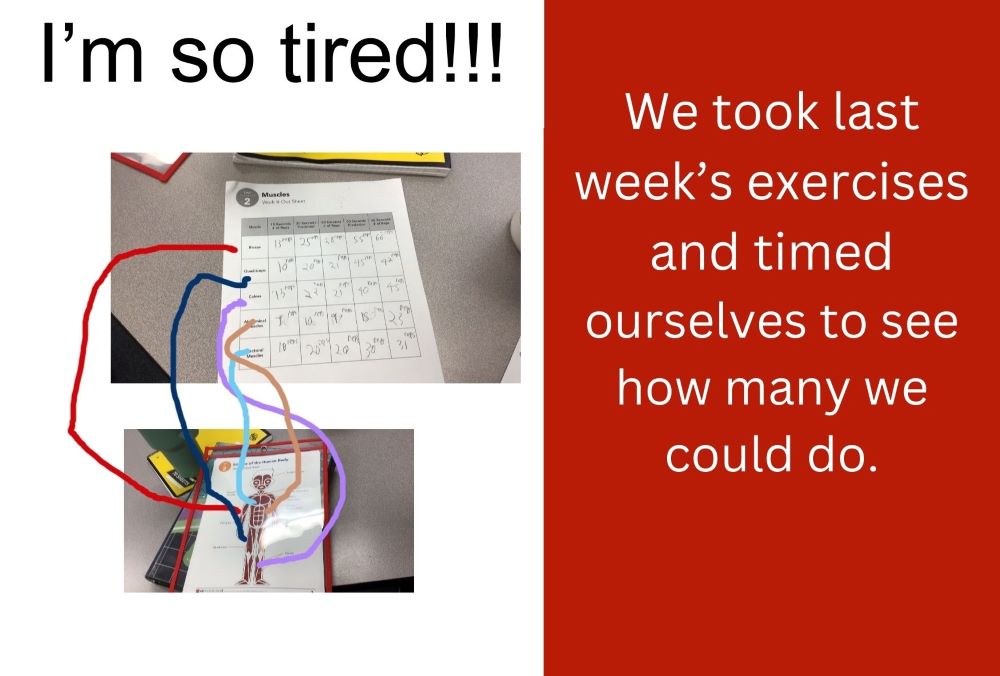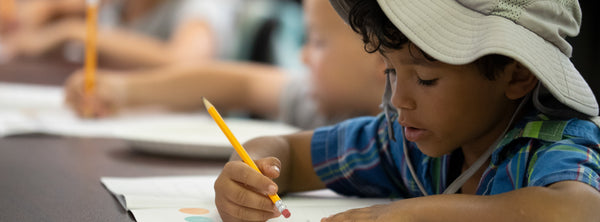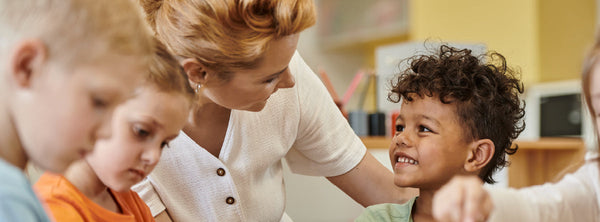
Peak Performance: Integrating STEM, Sports and the Science of the Human Body
On Your Marks, Get Set, Go! 🏃🏽♂️
Real-world relevance and a passion for health and sports serve as gateways to unlocking engagement and maximizing the potential of STEM education. Exploring the connection between STEM, sports and human physiology boosts learner engagement, as learners naturally gravitate toward topics that relate to their daily lives.
Subjects like sports, health and the science of the human body are particularly captivating. Maximizing health, athletic performance and fun through STEM integration will propel your STEM program to peak performance.
Get the Ball Rolling with Sports Science ⚽️
What better way to celebrate physical activity and sports than by introducing learners to a STEM curriculum that promotes fun through playing sports and games?

In Sports Science, learners dive into the mechanics of different movements involved in exercise and sports. Through collaborative, hands-on learning experiences, they explore how STEM concepts relate to various games, sports and activities.
Sports Science is an instant hit with learners. They'll be jumping, running, throwing and kicking, all while making connections to STEM concepts.
Imagine uncovering the science behind these STEM concepts:
- What does friction have to do with soccer?
- Why would a football player need to understand unbalanced forces?
- When you roll a ball, why does it eventually stop?
- Does the size or weight of the ball affect how quickly it hits the ground?
Here's a fascinating fact: learning skyrockets when we actively tackle problems. In Sports Science, active learning is the name of the game. Learners experiment with different solutions to the questions posed and observe the outcomes firsthand. For more on active learning, be sure to check out Physical Fitness, The Brain And Active Learning In The Classroom.
Active Learning Example:
Check out this example of an engaging experiment you will find in the Sports Science curriculum. This activity serves as an opportunity to introduce key vocabulary words through authentic learning experiences, enhancing learners' understanding of gravity, thrust, drag and resistance.
Parachute Probe:
When dropping different sizes and weights of balls simultaneously from the same height, which one reaches the ground first?
- Is it a heavy or light ball?
- The big or small ball?
Why do two different objects hit the ground at the same time? If a parachute and a ball are dropped simultaneously from the same height, which one do you predict will reach the ground first, or will they land simultaneously? Does altering the height at which the parachute is released affect the outcome? Will the parachute and the ball still hit the ground simultaneously? Can you propose other changes to the experiment to further explore the effects of gravity, air resistance and drag?
Sports Science reinforces the understanding of key scientific concepts while fostering active engagement and encouraging critical thinking through hands-on experimentation.
Score with Science of the Human Body 🏆
Did you know that sparking learners' curiosity about the human body can work wonders in STEM education? It's true! Kids are naturally intrigued by their own bodies and how they function, making topics like human physiology super exciting. When educators tap into this natural curiosity, they create a dynamic learning environment where learners are eager to dive into complex scientific concepts.
Research shows that when learners are genuinely interested in a subject, they remember more and actively participate in learning activities. Plus, by bringing real-life examples and hands-on experiments into the mix, educators can make abstract ideas easier to understand. For instance, measuring heart rate or seeing how exercise affects the body helps students connect theory with practice, leading to deeper learning experiences.
Learning about their bodies isn't just about staying healthy—it's about becoming better learners too! By understanding how their bodies work, students can boost their health, fitness and ability to absorb new information. Dive deeper into this topic in our blog: Cultivating Healthy Learners: Student Nutrition & the Human Body.
PCS Edventures' Science of the Human Body is another surefire hit in the STEM laboratory. In this program, learners explore the intricate workings of the skeletal, muscular, circulatory, nervous and brain systems.
Science of the Human Body explores the mechanics of movement. Learners examine human anatomy and physiology and discover the importance of nutrition through engineering design activities. What adds to the popularity of this STEM option among kids is the opportunity for them to take on the roles of both scientists and specimens.

What Activities Will Your Learners Engage in Science of the Human Body?
- Exercise and measure heart rate to calculate energy expenditure.
- Use a stethoscope to listen to a heartbeat.
- Learn about the importance of muscle contraction and elongation.
- Understand the importance of the digestive system in providing nutrients and energy to the body.
- Explore the synergistic relationship between exercise and nutrition in maintaining overall health.
What Do the Kids Have to Say?
When choosing a STEM curriculum, it's essential to hear directly from the real experts: the learners themselves! In Liberty, Missouri, fifth-grade STEMists devoted an entire semester to unraveling the mysteries of human physiology. Through captivating videos and glimpses of their projects, we witnessed their enthusiasm as they dove into the intricacies of their bodies, investigating how various systems interact and embracing the importance of healthy habits.
But don't just take our word for it—let's hear from the fifth-grade STEMists themselves about their adventures with the Science of the Human Body curriculum:
"In STEAM, I have learned so, so, so much so far! Currently, I am doing Science of the Human Body. It has taught me a lot about the lungs, heart, legs, arms, blood vessels and more! And it's super fun because I get to interact with how my body works!"
-Caroline
"This semester in STEAM, I worked on Science of the Human Body. Science of the Human Body is the perfect STEAM choice for me, not to mention my all-time favorite. At first, I kind of wanted to be a doctor but I didn't know for sure, but now I know for sure."
-Harper
“In STEAM I have done sewing and Science of the Human Body. I did not know anything about these topics before I started them. Something that I am most proud of is how much I have learned about the human body and how much I’ve grown this year.”
-Ellie
Before making a decision to purchase a STEM curriculum, it's invaluable to have a firsthand look at real examples of work. Below, you'll find samples of work from two learners as well as a selection of videos created during the study of Science of the Human Body. These examples offer a sneak peek into how engaging, practical and fun our STEM programming truly is.
Student Work Samples:

Reusable pocket sleeve allows The Heart, Work It Out Part 2 activity to be used again and again!

The data chart in Muscle Work It Out helps learners organize data.
Student Showcase Videos:
These project videos represent what our STEMists learned during each unit of the body system study. The muscular system video and digestive system video focused on specific activities within the unit of study. The respiratory system video demonstrated a culmination of knowledge about the lungs.
Click any of the videos below for a firsthand look at these fun student videos!
Harper explains how to stress and build muscles.
Harper and Caroline explain how to burn calories.
Harper estimates her heart rate.
Harper and Caroline explain the respiratory system.
Flexing Minds and Muscles 💪
By exploring the realms of sports, health and human physiology, learners engage deeply with STEM concepts. Programs such as Sports Science and Science of the Human Body inspire young minds and foster a love for learning that extends far beyond the classroom.
Through hands-on activities and immersive experiences, learners gain valuable scientific knowledge and develop healthy habits for life. The enthusiastic testimonials from learners like Caroline, Harper and Ellie underscore the program's success in sparking curiosity and igniting passions for health and science.
As we celebrate physical fitness, health and sports, let’s embrace the power of STEM education in promoting holistic well-being and lifelong learning. By incorporating these curriculum options into your STEM education, you're not just enhancing engagement and learning—you're propelling your program to peak performance.
How do you unlock engagement in your learners?
We'd Love to Hear from You! Tell us in the comments below:

Author: Kim Turner
A life-long learner and lover of education, Kim has 30 years of education experience with STEM labs, gifted and talented courses and more!








